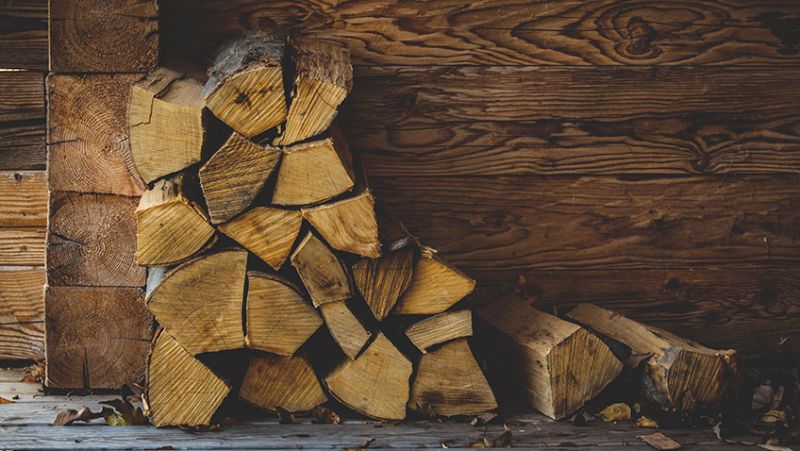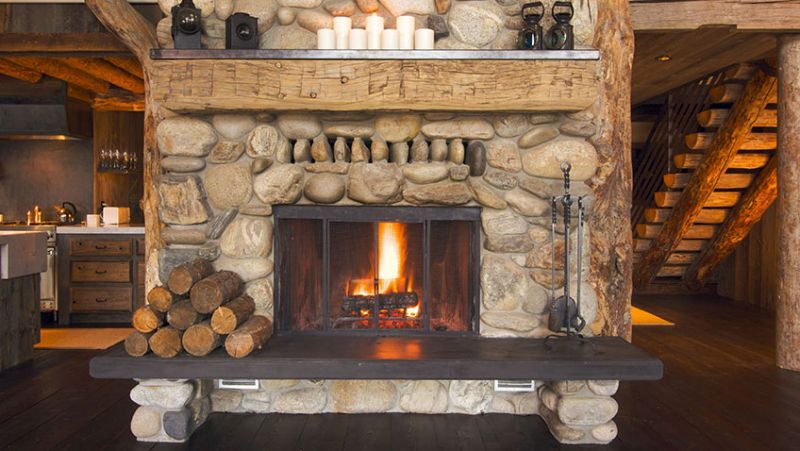
Maintaining your wood-burning fireplace is important to ensure a safe and cosy fire all season long. Here are 5 essential tips to keep in mind.
Schedule an Annual Inspection
Each year, you should have an annual inspection done by a professional chimney inspector to ensure that it is safe to use. Additionally, you should check the cap on top of your chimney regularly for any problems. If you do not properly maintain your wood-burning fireplace, it could pose a serious safety risk to you and your family. Each year, an estimated 21,000 house fires are caused by chimneys and fireplaces.
Annual inspections by a professional chimney inspector can help identify any potential problems with your fireplace before they become serious. The inspector will check the flue for obstructions, the condition of the mortar and bricks, and the chimney cap. They will also look for any signs of animal nesting or other debris that could clog the flue and cause a fire.
Store Your Wood Properly
Here are some tips on how to store your wood properly for burning in your fireplace
- Wood should be completely dry before burning. Hardwood dries more slowly than softwoods
- Store wood 1 foot off the ground, with good air circulation on all sides to encourage drying
- Building a wood shed is the best way to store wood for your fireplace. Keep the shed tightly closed to keep out moisture
- Firewood should be seasoned (dried) for at least six months before burning
- You can tell if the wood is seasoned if it is grey or black in colour and cracks on the end
- Green wood (wood that has not been seasoned) is hard to light, produces a lot of smoke, and doesn't burn well.
Only burn dry wood in your fireplace
Wet wood won't burn as well and can create a lot of dangerous smoke. If you don't have a wood shed, try to store your wood off the ground and in a place where it will get good air circulation.
Check Your Damper Regularly
Between your annual inspections, you should check for any problems. Use a flashlight to check if there is anything that may be causing a blockage in your chimney. Small animals can decide to create a home within your chimney. Buildup can also be a problem, so it is essential to make sure that everything is clear.
Visualise the fire before you light it
This may seem silly, but it will help you understand how the wood should be arranged. Ensure that there are no flammable objects near the fireplace. Make sure that your wood is dry by checking for any visible moisture. If the wood is too green, it will be difficult to get it to light, and it will produce a lot of smoke.
Start with small pieces of kindling
You need to create a bed of ashes before you add any larger pieces of wood. This will help to insulate the fire and make it easier to light. Once the kindling is burning, you can slowly add larger pieces of wood.
Check your damper regularly to ensure that it is clear of any debris and fully operational. A blockage in your damper can cause inefficient burning and produce a lot of smoke. Keep your fireplace clean and clear of any flammable objects to help prevent any accidents.
Burn Your Wood Cleanly
Maintaining your wood-burning fireplace is important to keeping your home safe and clean. Here are some tips to help you do it right.
- Use only composition logs, real wood or white matte paper in your fireplace. Any other materials could potentially damage your flue and harm the health of everyone living in your home
- If you’re burning a composition log in your wood burning fireplace, choose material that produces fewer pollutants
- Creosote and soot build-up inside your chimney can cause a potentially dangerous fire inside your chimney. You can avoid this by refraining from burning resinous wood such as pine and evergreen boughs and by using a fireplace insert or glass doors on your fireplace
- Make sure the moisture content of your wood is less than 20% before burning it. To check, use a moisture meter or simply give the piece of wood a good knock. If it sounds hollow, it’s ready to burn. If it sounds dull, it still has too much moisture
- Seasoned wood burns more cleanly and produces less pollution. You can season your own wood, or buy it from a supplier
- Be sure to open the flue before lighting a fire, and close it when the fire is out. This will help ensure that your home is not filled with dangerous smoke and gases
- Never leave a fire unattended, and make sure it is completely extinguished before going to bed or leaving the house
- If you have any questions or concerns about maintaining your wood-burning fireplace, please contact a professional.

